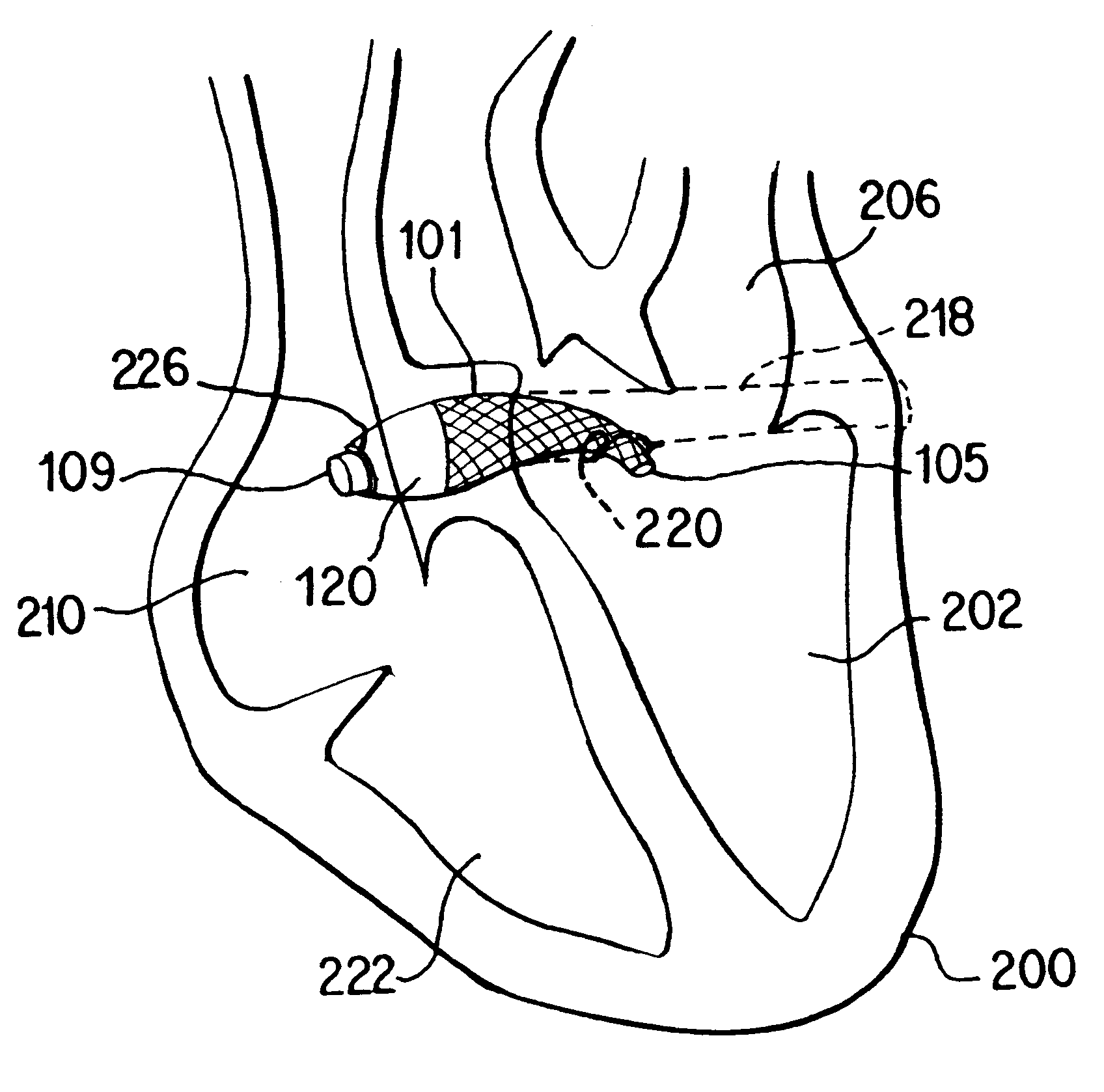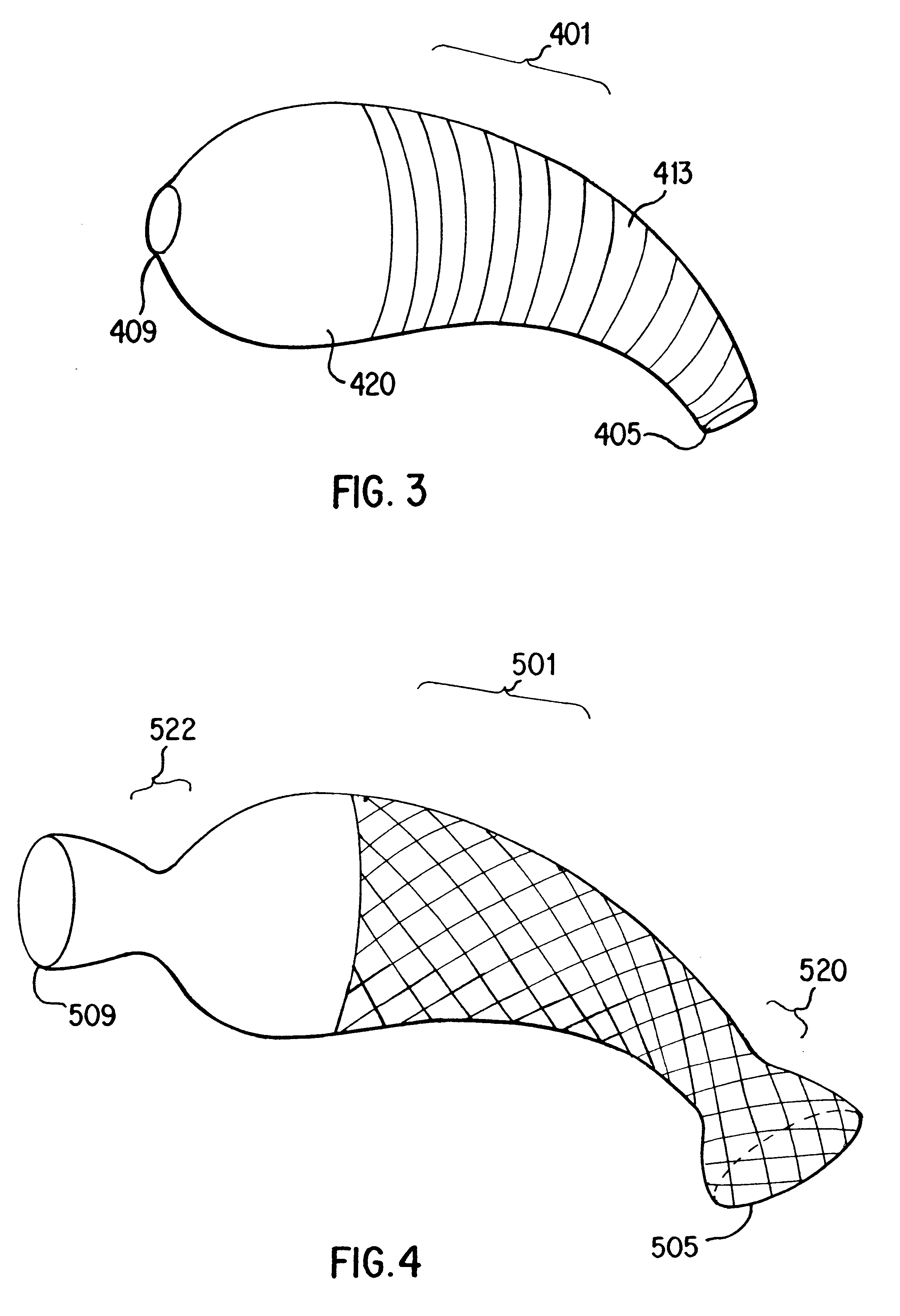Stent for arterialization of the coronary sinus and retrograde perfusion of the myocardium
a technology of retrograde perfusion and coronary sinus, which is applied in the field of stents, can solve the problems of teaching how to construct such a valve, requiring open heart surgery, and invasive methods, and achieve the effects of reducing the shunting of oxygenated blood, reducing the amount of left-to-right shunt, and increasing the pressure inside the coronary sinus
- Summary
- Abstract
- Description
- Claims
- Application Information
AI Technical Summary
Benefits of technology
Problems solved by technology
Method used
Image
Examples
Embodiment Construction
A preferred embodiment of a stent contemplated in the present invention is illustrated in FIG. 1. An object of the invention is to provide a novel stent 101 which may be placed percutaneously to communicate oxygenated blood from the left ventricle to the coronary sinus. The stent 101 generally comprises a tubular member having a leading (LV) end 105 and a trailing (RA) end 109 and having an axial passageway therethrough.
According to the present embodiment, the stent 101 has relatively smaller passageways or smaller cross sectional diameters at the leading (LV) end 105 and at the trailing (RA) end 109 as compared to the rest of the stent 101. Thus, the cross sectional area of the stent 101 tapers toward the leading (LV) end 105 and toward the trailing (RA) end 109. As blood flows through the stent, the cross sectional area enlarges toward the midsection of the stent 101 and decreases toward the trailing (RA) end 109. The stent 101 at the trailing (RA) end 109 is also surrounded with ...
PUM
 Login to View More
Login to View More Abstract
Description
Claims
Application Information
 Login to View More
Login to View More - R&D
- Intellectual Property
- Life Sciences
- Materials
- Tech Scout
- Unparalleled Data Quality
- Higher Quality Content
- 60% Fewer Hallucinations
Browse by: Latest US Patents, China's latest patents, Technical Efficacy Thesaurus, Application Domain, Technology Topic, Popular Technical Reports.
© 2025 PatSnap. All rights reserved.Legal|Privacy policy|Modern Slavery Act Transparency Statement|Sitemap|About US| Contact US: help@patsnap.com



